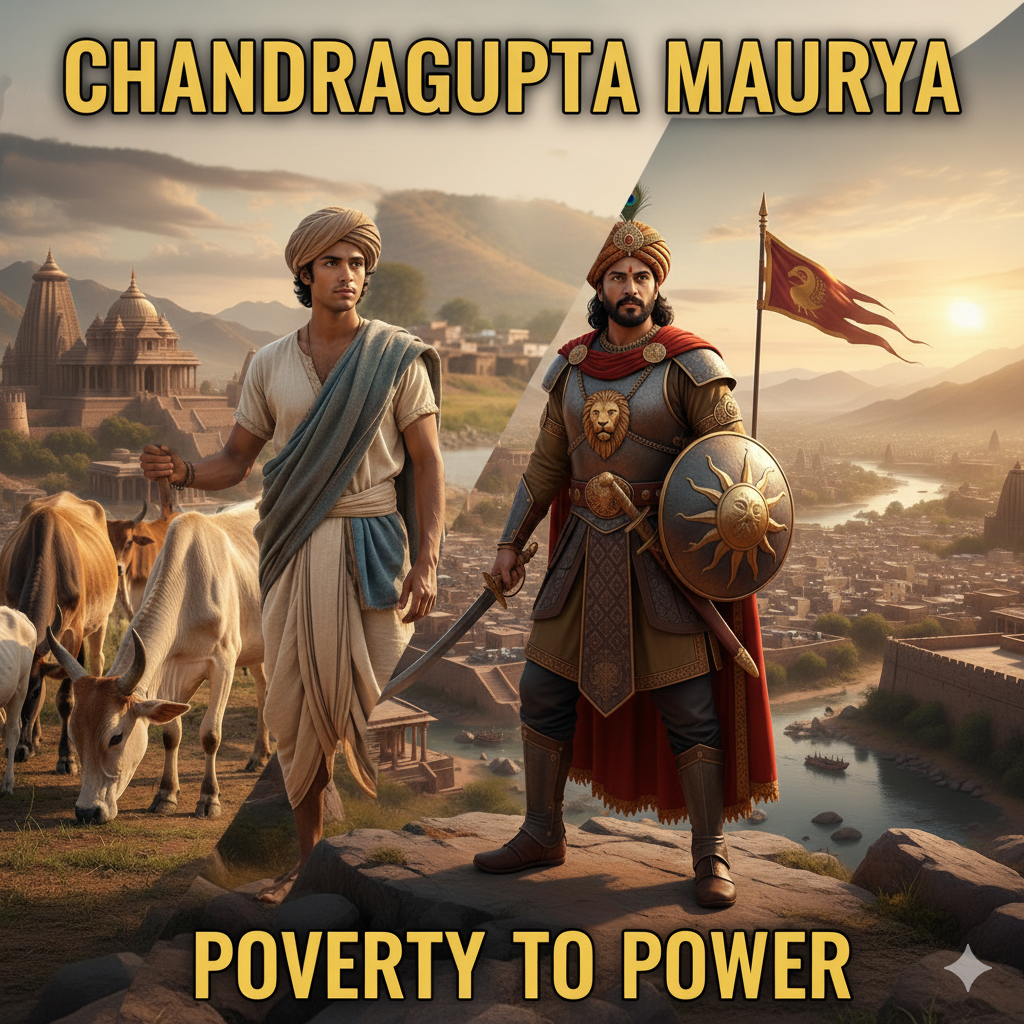complete biography of Chandragupta Maurya,
Chandragupta Maurya – Complete Biography
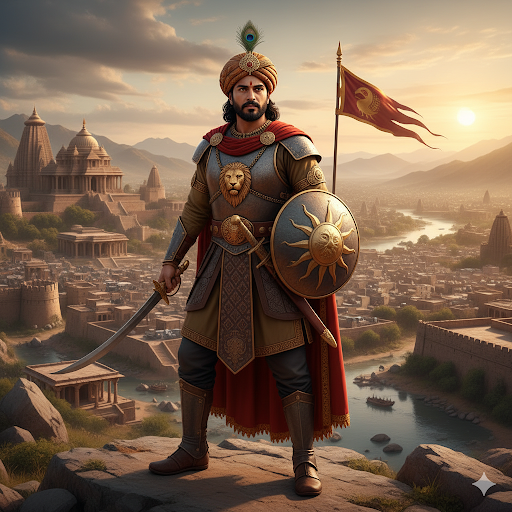
Birth and Parents
- Chandragupta Maurya was born around 340 BCE (exact year uncertain).
- He is believed to have been born in Pataliputra (modern Patna, Bihar) or nearby.
- His father is said to have died early, leaving his family in poverty.
- Various traditions suggest he belonged to the Maurya clan (possibly Kshatriya or Shudra origin depending on sources).
- His mother raised him under difficult conditions, and he spent his early life away from luxury.
Early Childhood
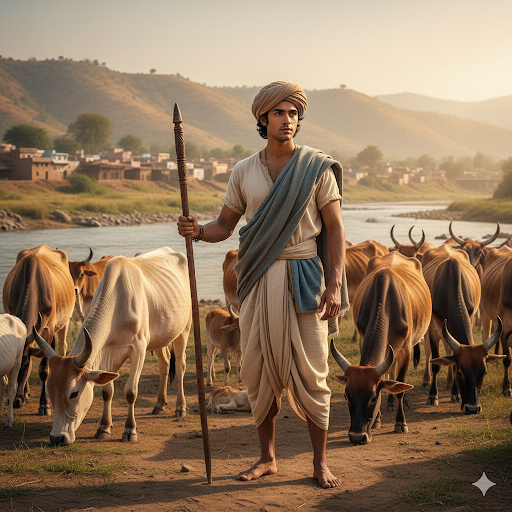
- Chandragupta grew up in a humble environment, often said to have been a cowherd or hunter in his childhood.
- Despite poverty, he showed qualities of leadership, courage, and intelligence.
- According to Buddhist and Jain texts, he had a commanding presence and natural charisma even as a boy.
Education and Chanakya
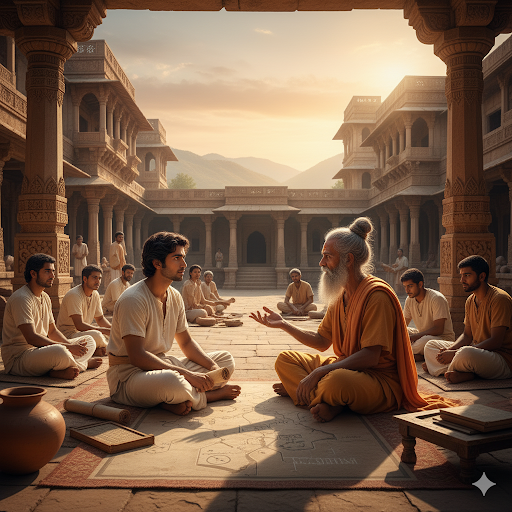
- Chanakya (Kautilya/Vishnugupta), a Brahmin scholar from Takshashila, discovered Chandragupta.
- Impressed by his intelligence, Chanakya took him to Takshashila University, one of the greatest learning centers of the time.
- There, Chandragupta studied:
- Politics and administration (Arthashastra principles).
- Military strategies and statecraft.
- Economics, diplomacy, and philosophy.
- Chanakya trained him with a vision to overthrow the corrupt Nanda dynasty of Magadh.
Struggle Against the Nandas (Magadh Empire)
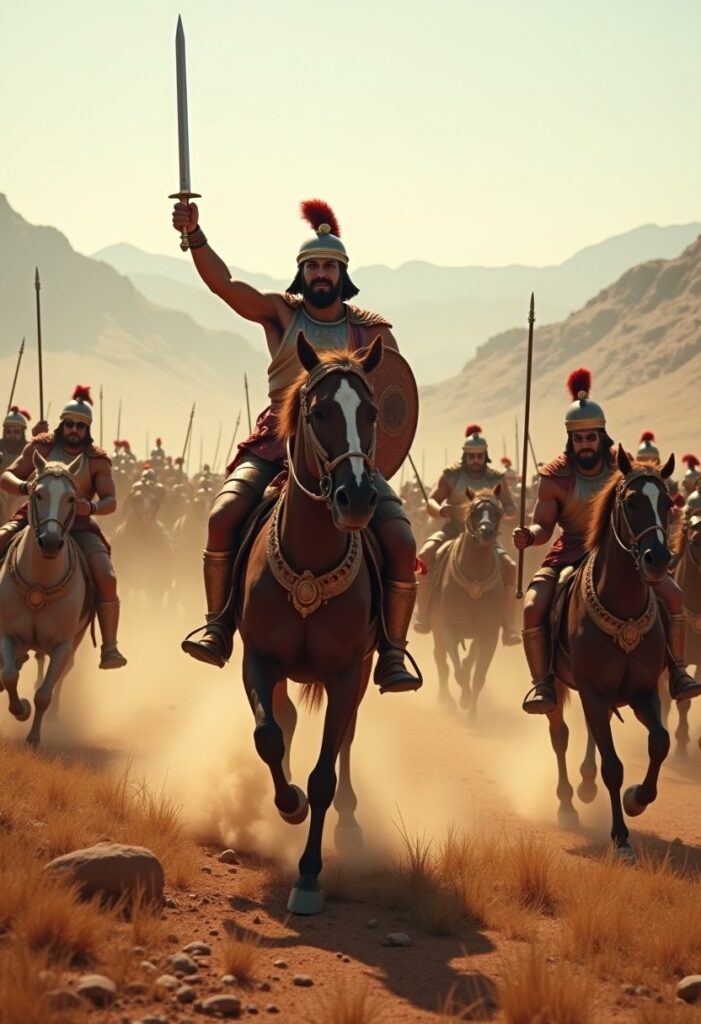
- At that time, Magadh (ruled by King Dhanananda) was the most powerful kingdom in India.
- Dhanananda was unpopular due to his arrogance, heavy taxation, and cruelty.
- With Chanakya’s guidance, Chandragupta organized:
- Guerrilla warfare against the Nandas.
- Alliances with local rulers and tribes.
- After years of struggle, Chandragupta finally defeated Dhanananda around 321 BCE, establishing the Mauryan Empire.
Conflict with the Greeks
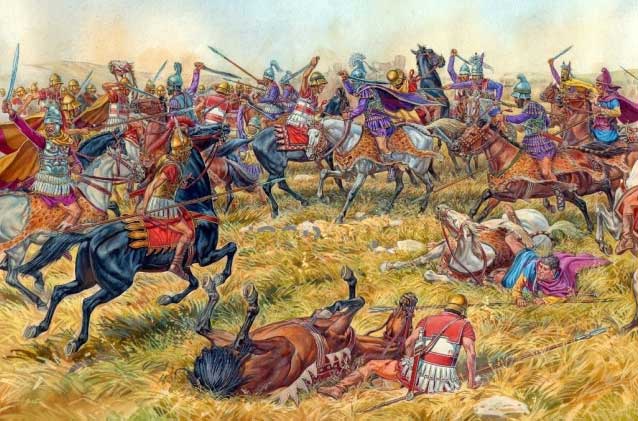
- After Alexander the Great invaded north-west India (327–325 BCE), many small kingdoms fell under Greek (Macedonian) control.
- Post Alexander’s death (323 BCE), his general Seleucus Nicator controlled north-west India.
- Chandragupta defeated Seleucus around 305 BCE.
- Treaty:
- Seleucus ceded territories of Afghanistan, Baluchistan, and Gandhara to Chandragupta.
- In return, Chandragupta gifted Seleucus 500 war elephants.
- A diplomatic alliance was sealed through marriage (possibly Seleucus’s daughter married to Chandragupta).
- This victory gave the Mauryan Empire international recognition.
Empire and Throne
- Chandragupta Maurya founded the Maurya Empire (321 BCE), the first pan-Indian empire.
- Capital: Pataliputra.
- Empire included:
- Present-day Bihar, Bengal, parts of Punjab, Afghanistan, and Pakistan.
- Later extended across most of India except far south.
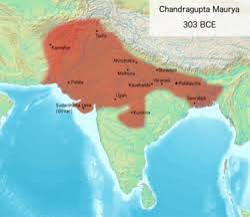
- Administration:
- Highly organized government with ministers, spies, and officials.
- Strict law and order as advised by Chanakya’s Arthashastra.
- Efficient tax system and centralized control.
Victories and Achievements
- Defeat of the Nanda dynasty (Magadh).
- Expansion into North-West India after defeating Seleucus.
- Consolidation of Punjab, Sindh, and Afghanistan.
- Establishment of a centralized and disciplined administration.
- Creation of one of the largest empires in Indian history.
Religion and Jain Influence
- In the latter part of his life, Chandragupta adopted Jainism under the influence of the Jain saint Bhadrabahu.
- He abdicated the throne around 298 BCE in favor of his son Bindusara.
- Chandragupta then migrated south with Bhadrabahu and many Jain monks.
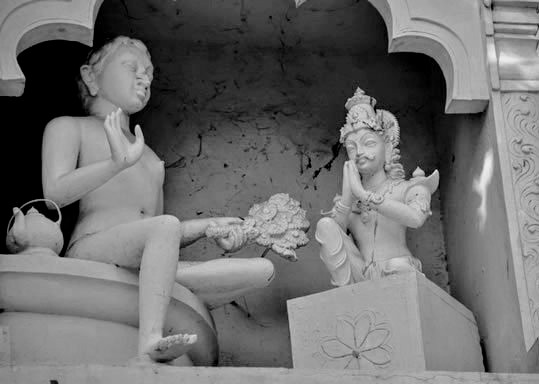
Death
- Chandragupta spent his last years in Shravanabelagola (Karnataka).
- According to Jain tradition, he observed the ritual of Sallekhana (fasting unto death) and died around 297 BCE.
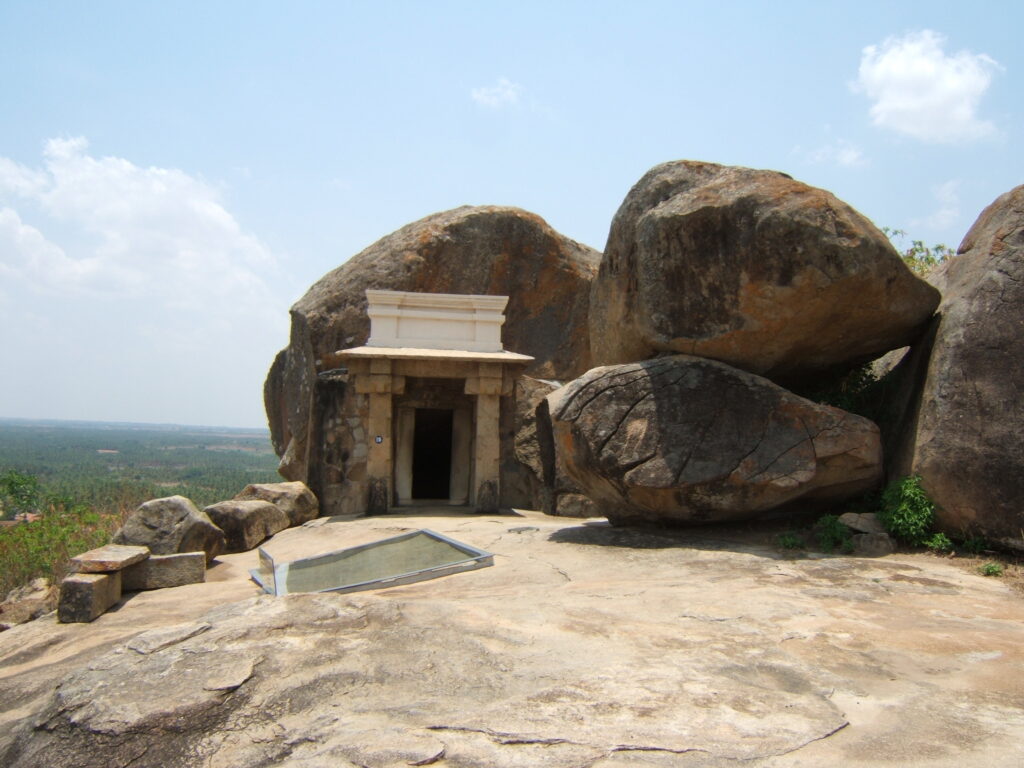
Bhadrabahu Cave On Chandragiri Hill In Shravanabelagola Where Great Emperor Chandragupta Maurya Died In 297 B.C
Hassan district,Karnataka
Legacy
- Founder of the Maurya dynasty and the first emperor to unify most of India.
- Remembered as a visionary leader who transformed small kingdoms into a mighty empire.
- Mentor-disciple relationship of Chanakya and Chandragupta became legendary in Indian history.
- His dynasty, continued by Bindusara and later Ashoka the Great, carried forward the Mauryan glory.
- Revered in Jain tradition as a ruler who renounced power for spiritual pursuit.
In short:
Chandragupta Maurya rose from poverty to power, overthrew the Nandas, defeated the Greeks, and laid the foundation of the greatest Indian empire of ancient times. His life is an inspiring story of struggle, vision, and transformation.
